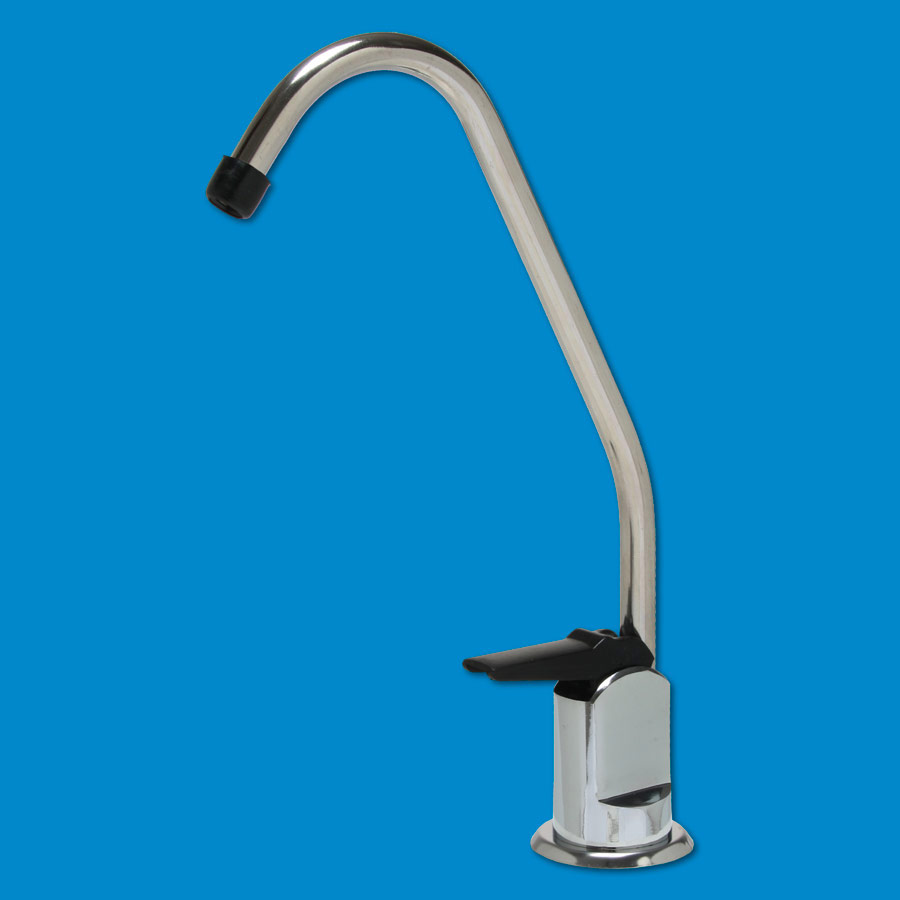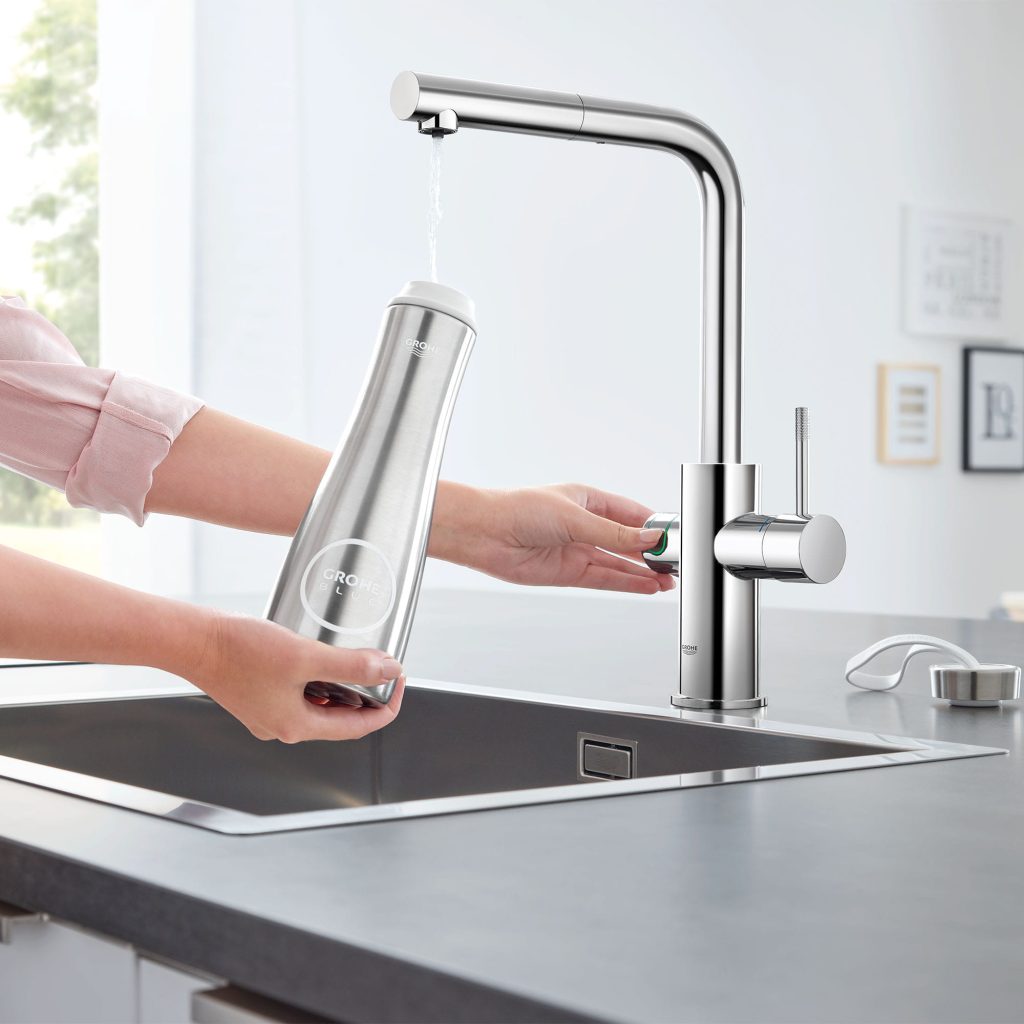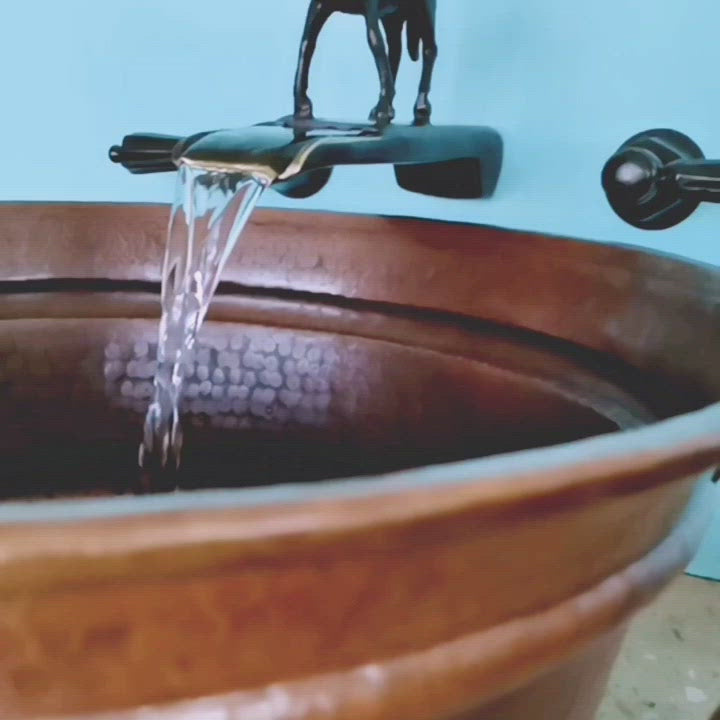How to remove hard water from faucets? Hard water can cause a variety of problems in the home, including leaving mineral deposits on faucets and fixtures. These mineral deposits can be unsightly and can also cause damage to the faucets over time. Fortunately, there are several methods for removing hard water from faucets and restoring them to their original condition.

Understanding Hard Water
Before we discuss how to remove hard water from faucets, it’s important to understand what hard water is and why it causes mineral deposits. Hard water is water that contains a high concentration of minerals, particularly calcium and magnesium. When hard water is heated or evaporates, the minerals can be left behind, forming a white, chalky residue on faucets and fixtures.
Methods for Removing Hard Water from Faucets
There are several methods for removing hard water from faucets, ranging from simple household ingredients to commercial products. Here are a few effective methods:
Vinegar
One of the most popular and effective methods for removing hard water from faucets is to use vinegar. The acidity of vinegar helps to dissolve the mineral deposits, making them easier to remove. To use vinegar, simply soak a cloth or paper towel in vinegar and wrap it around the affected area. Leave the vinegar-soaked cloth in place for at least 30 minutes, then use a soft brush or sponge to scrub away the mineral deposits. Rinse the area thoroughly with water when finished.
Lemon Juice
Lemon juice can also be used to remove hard water from faucets, thanks to its natural acidity. To use lemon juice, simply cut a lemon in half and rub the cut side over the affected area. Alternatively, you can squeeze the juice of a lemon into a small bowl and use a cloth to apply the juice to the faucet. Allow the lemon juice to sit for a few minutes, then use a soft brush or sponge to scrub away the mineral deposits. Rinse the area thoroughly with water when finished.
Baking Soda
Baking soda is a gentle abrasive that can help to remove hard water from faucets without damaging the finish. To use baking soda, mix it with a small amount of water to form a paste, then apply the paste to the affected area. Use a soft brush or sponge to scrub the paste into the mineral deposits, then rinse the area thoroughly with water when finished.
Commercial Cleaners
If natural methods like vinegar, lemon juice, and baking soda are not effective, there are also commercial cleaners available that are specifically designed to remove hard water from faucets. These cleaners are typically formulated with stronger acids or abrasives that can help to break down and remove stubborn mineral deposits. Be sure to follow the manufacturer’s instructions carefully when using commercial cleaners, and always test the cleaner on a small, inconspicuous area first to ensure that it does not damage the faucet’s finish.

Preventing Future Build-Up
Once you have successfully removed hard water from your faucets, it’s important to take steps to prevent future build-up. One of the best ways to prevent hard water deposits is to install a water softener in your home. A water softener works by removing the minerals that cause hard water, leaving you with soft, mineral-free water that is less likely to leave deposits on your faucets and fixtures.
Another option for preventing future build-up is to wipe down your faucets and fixtures with a dry cloth after each use. This can help to remove any water droplets that may contain mineral deposits, preventing them from drying onto the faucet and causing build-up.
Maintenance considerations for faucets
Maintaining and repairing faucets is an important part of household maintenance. A leaking faucet not only wastes water but can also lead to water damage in the surrounding area. To avoid costly repairs and conserve water, it is essential to address faucet issues promptly and effectively.
Importance of Faucet Maintenance
Faucets are used daily and can experience wear and tear over time. Regular maintenance of faucets can help prevent issues such as leaks, drips, and clogs. Proper maintenance can also extend the lifespan of faucets and ensure they function optimally. Additionally, maintaining faucets can help conserve water, which is not only beneficial for the environment but can also lead to cost savings for homeowners.
Identifying Faucet Issues
Before addressing faucet maintenance and repairs, it is important to be able to identify common issues that may arise. Some of the most common faucet problems include leaks, low water pressure, dripping, and unusual noises when the faucet is turned on or off. Understanding the root cause of these issues is crucial for determining the appropriate maintenance or repair actions to take.
Maintenance Tips for Faucets
Regular maintenance can help keep faucets in good working condition and prevent potential issues from arising. Here are some maintenance tips for faucets:
- Cleaning: Regularly clean the aerator and filter screens to remove any sediment or debris that may be affecting water flow.
- Lubrication: Apply lubricant to the moving parts of the faucet to keep them functioning smoothly and prevent corrosion.
- Tightening: Check for any loose or worn-out parts and tighten or replace them as needed to prevent leaks.
- Inspections: Periodically inspect the faucet for signs of wear, rust, or corrosion and address any issues promptly to prevent further damage.

Repairing Faucet Issues
In addition to regular maintenance, it is important to address any faucet issues that may arise promptly. Here are some common faucet problems and their respective repair methods:
Leaks:
Leaks can occur at various points in a sink faucets, including the spout, handles, or base. To repair a leak, it is often necessary to replace worn-out seals, O-rings, or washers. In some cases, tightening or adjusting certain components may also resolve the issue.
Low Water Pressure:
Low water pressure can be caused by a clogged aerator, sediment buildup in the faucet, or issues with the water supply. Cleaning the aerator and filter screens, as well as checking for any blockages in the faucet, can help restore normal water pressure.
Dripping:
A dripping faucet can be caused by worn-out or damaged internal components, such as the cartridge or valve. Replacing these components can often resolve the issue and stop the dripping.
Unusual Noises:
If a faucet makes unusual noises when turned on or off, it may be due to loose parts, water hammer, or issues with the water supply. Inspecting and tightening any loose parts, installing a water hammer arrestor, or addressing the water supply issue can help eliminate the noises.
Maintaining and repairing faucets is essential for ensuring they function properly and avoiding water wastage. By following proper maintenance techniques and promptly addressing any faucet issues that arise, homeowners can keep their faucets in good condition and prevent potential water damage in their homes. Additionally, seeking professional help for complex faucet issues can ensure that repairs are carried out effectively, further extending the lifespan of faucets.

Conclusion
Removing hard water from faucets can be a frustrating and time-consuming task. But with the right methods and a little elbow grease. You can restore your faucets to their original condition. Whether you choose to use natural ingredients like vinegar and lemon juice or opt for a commercial cleaner. There are several effective methods for removing hard water from faucets. By taking steps to prevent future build-uP. You can keep your faucets looking great for years to come.
